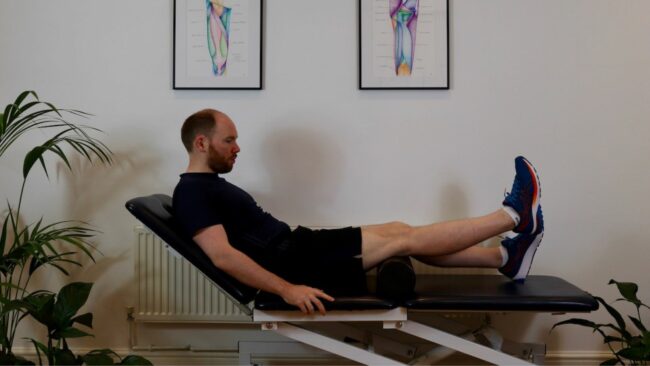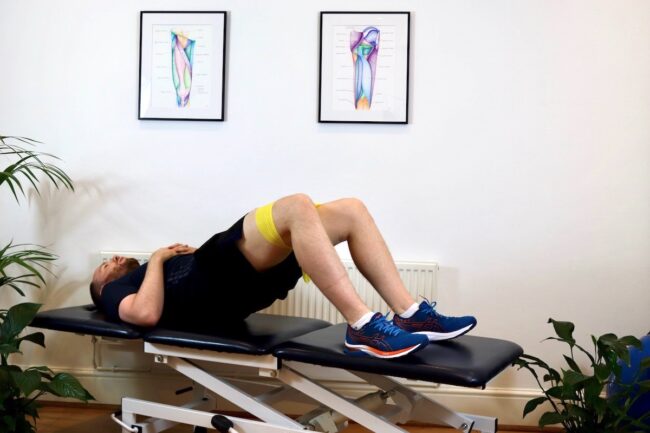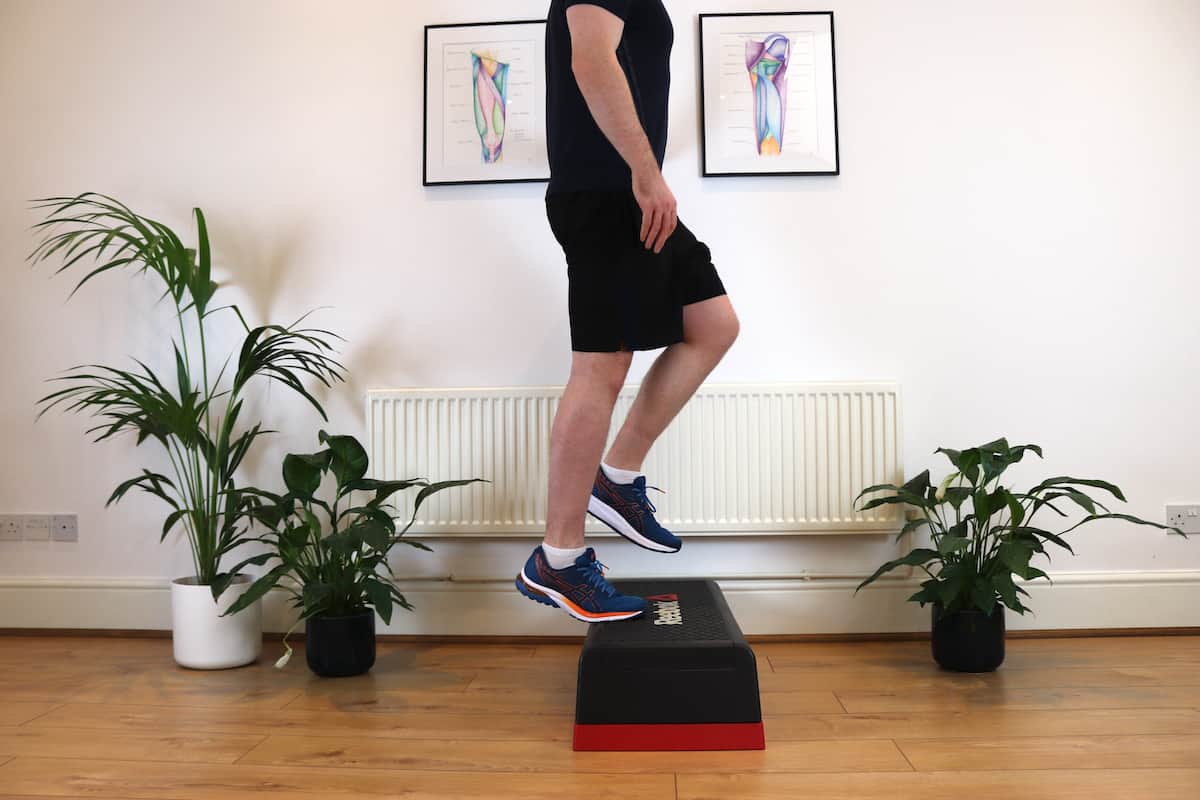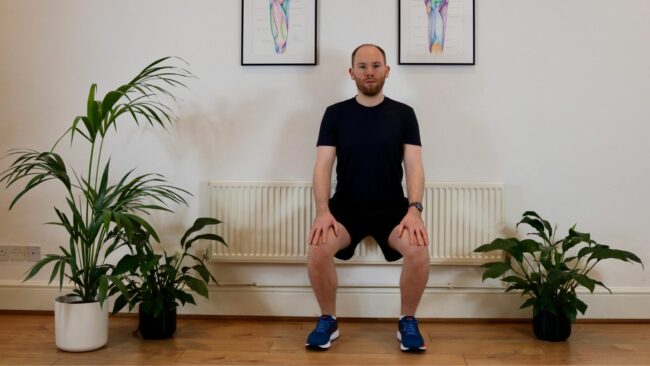Lateral Meniscus Tear: Symptoms, Causes and Diagnosis
Read More >
The meniscus is a double crescent-shaped fibrocartilage structure in the knee, that sits between the tibia and the femur to provide greater stability to the joint and is able to absorb impact. There are two halves, medial and lateral. The lateral part, on the outside half of the knee, is most commonly torn due to a twisting motion of the knee when the foot is fixed on the floor, or with deep squatting with weight. Pain and swelling can occur with an injury, along with a loss of the full range of flexion and extension. With a severe injury, there may be a feeling of instability of the knee, like it might give way. In the most severe cases, the knee might lock in certain positions.
Rest, ice, gentle mobility and stretches are the first treatment needed. Here are two commonly prescribed stretches for a lateral meniscus tear.

With a straight back bend forwards at the hip onto an outstretched leg. Keep your knee straight and feel the stretch at the back of your thigh.
Hold for 45seconds, then relax, and repeat every 2-3 hours in the acute phase after injury.
Stand on the edge of a step and let both heels hang down while keeping your knees straight. You should feel the stretch on the back of your calves. If you want to increase the stretch you can do it on one leg at a time with the other foot stepped forwards.
Hold for 45 seconds, then relax, and repeat every 2-3 hours in the acute phase after injury.

In most injuries, there will be an inhibition of the quadriceps muscle and quad atrophy, the reduction in the size of the muscle as it is not working. Therefore strengthening this muscle to activate its back to normal function and build back strength is very important. Other common strengthening exercises that are prescribed for a lateral meniscus tear are for the calf and hamstring muscles which both cross over the knee joint, and therefore provide stability at the knee. Seeing a physical therapist for an assessment is very helpful for your recovery as they will be able to assess your areas of weakness, tightness and your movement patters, to prescribe any other specific exercises that might help make your body more robust against injury and recover sooner.
Sit with your knee resting on a foam roller or a thick, rolled-up towel. Push your knee down into the towel, straightening your knee and causing your ankle and heel to lift off the floor. Feel this working your quadriceps muscle at the front of your thigh.
Hold the contraction for 10 seconds, then relax and repeat 6-10 times. Rest for 2-3 minutes then repeat 2-3 times. This can be done 1-2x per day.


Lie on your back with your heels far enough away that your knees are no more than 90º bent. Squeeze your glute muscles and tilt your pelvis backwards, flattening your back against the floor. Lift your pelvis from your tailbone up towards the ceiling. You should feel this working your hamstrings, at the back of your thigh. If you don’t then try taking your feet slightly further away from your pelvis.
The addition of a band around your thighs to push out into will help you work your gluteal muscles more.
Repeat this 8-12 times, rest for 2-3 minutes then repeat 3 sets. This can be done once per day.
Stand on one leg with your heel off the edge of a step. Keep your knee straight while lifting your heel as high as you can, so you lift onto your toes. Slowly lower back down as far as you can. You should feel this working your calf muscle at the back of your lower leg.
Repeat this 8-12 times, rest for 2-3 minutes then repeat 3 sets. This can be done once per day.


This is a good exercise to do once you are managing you pain well and you can try this as a progression from the ‘Inner Range Quads’ exercise. Lean your back agains the wall with your feet stepped out so they are under your knees. You should feel this working your quadriceps at the front of your thigh and your glutes at the back of your pelvis. You can initially hold a quater squat then progressively hold lower positions provided you get no pain.
Hold this position for 30-60 seconds, rest for 2-3 minutes then repeat 3 sets. This can be done once per day.
Physiotherapy with James McCormack
This article is written by James McCormack, a Lower Limb Specialist who is an expert in treating knee pain.
This is not medical advice. We recommend a consultation with a medical professional such as James McCormack if you are experiencing any of the symptoms discussed in this article. James offers Online Physiotherapy Appointments weekly and face-to-face appointments in his London clinic.